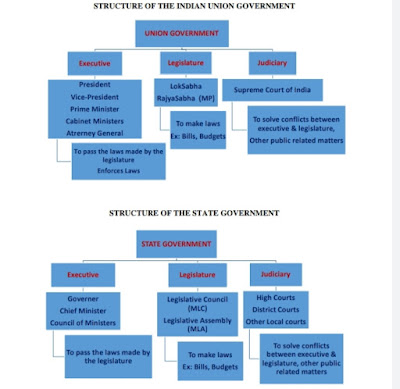THE CENTER-STATE RELATIONSHIP / UNION- STATE RELATIONS IN INDIA
In India, before the formation of the federation the States were not ‘sovereign’ entities.
As such, there was no need for safeguards to protect ‘States’. On account of the exigencies of
the situation, the Indian federation has acquired characteristics which are quite different from
the American model. The residuary powers under the Indian Constitution are assigned to the
Union and not to the States. However, it may be noted that the Canadian Constitution does the
same mode of distributing the powers cannot be considered as eroding the federal nature of the
Constitution. Though there is division of powers between the Union and the States, the Indian
Constitution provides the Union with power to exercise control over the legislation as well as
the administration of the States. Legislation by a State can be disallowed by the President, when
reserved by the Governor for his consideration. The Governor is appointed by the President of
the Union and holds office “during his pleasure”. Again these ideas are found in the Canadian
Constitution though not in the Constitution of the U.S.A. The Constitution of India lays down
the Constitution of the Union as well as the States, and no State, except Jammu and Kashmir,
has a right to determine its own (State) Constitution. When considering the amendment of the
Constitution we find that except in a few specific matters affecting the federal structure, theStates need not even be consulted in the matter of amendment of the Constitution. The bulk of
the Constitution can be amended by a Bill in the Union Parliament being passed by a special
majority. In the case of the Indian Constitution, while the Union is indestructible, the States are
not. It is possible for the Union Parliament to reorganize the States or to alter their boundaries
by a simple majority in the ordinary process of legislation. The ‘consent’ of the State
Legislature concerned is not required; the President has only to ‘ascertain’ the views of the
Legislatures of the affected States. The ease with which the federal organization may be
reshaped by an ordinary legislation by the Union Parliament has been demonstrated by the
enactment of the States Reorganization Act, 1956. A large number of new States have, since,
been formed. Under the Indian Constitution, there is no equality of representation of the States
in the Council of States. Hence, the federal safeguard against the interests of the lesser States
being overridden by the interests of the larger or more populated States is absent under our
Constitution. Its federal nature is further affected by having a nominated element of twelve
members against 238 representatives of the States and Union Territories.









0 Comments